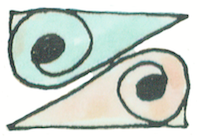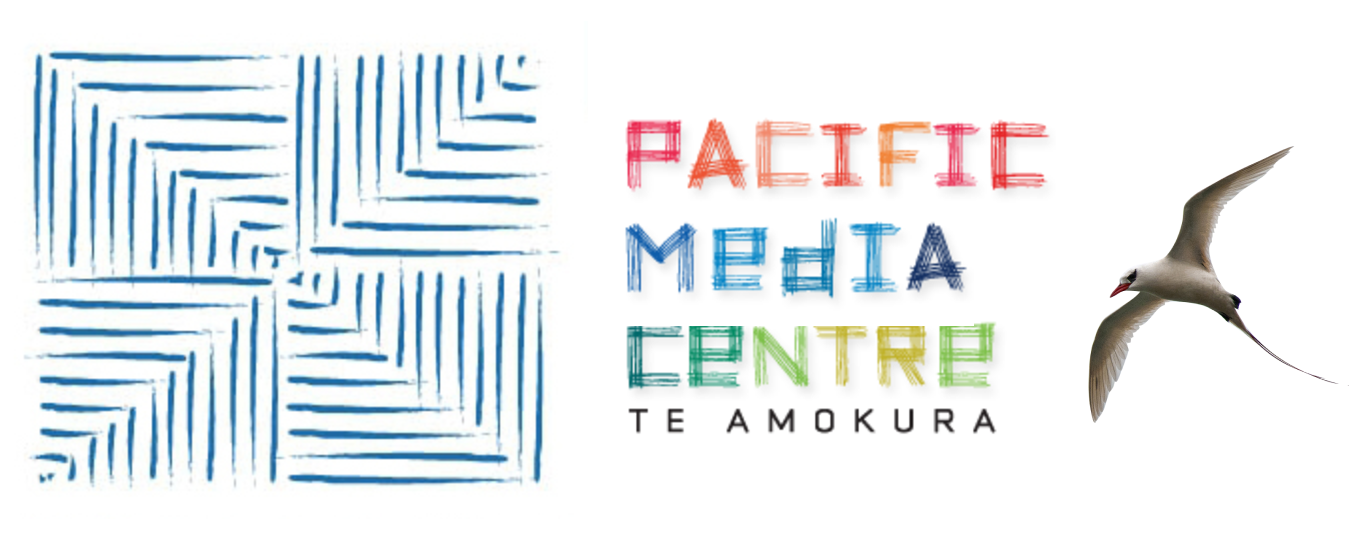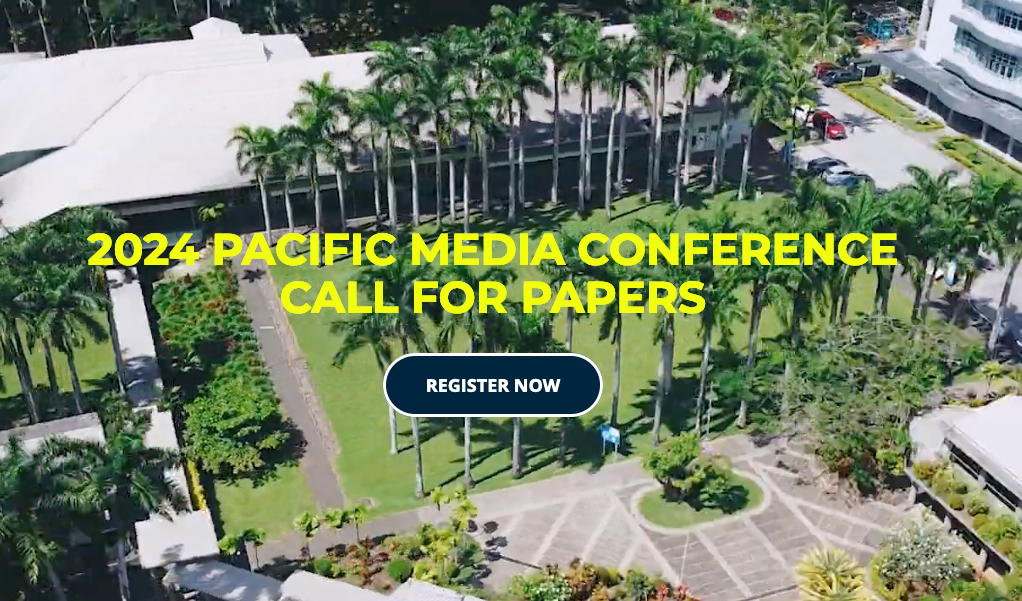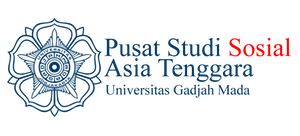The journalist’s ‘toolbox’ of competencies in the Digital-Global Age: Reflections on the global state of research
Abstract
The different crises that journalism continues to face worldwide make it imperative to talk about the journalist’s ‘toolbox’, a set of competencies that journalists must have in this so-called age of disruption. This article maps the global state of research on journalistic competence, offers ways of conceptualising journalistic competencies and provides the necessary context by which the development of the competency construct can be understood. What are the approaches in studying journalistic competence and what perspectives are dominant, clashing, or need to be challenged? The state of research shows an imbalance in perspectives: Studies on journalistic competencies are concentrated in US, Europe, and the Nordic states. The environments beyond the Western context or the ‘Global North’, so to speak, continue to be underrepresented, despite a strong research and journalism tradition unique to some of the Global South regions. Secondly, the industry perspective continues to dominate the discourse, although it has been described as hostile to innovation and critical reflection. The article ends with a call not just to further define and theorise journalistic competencies, but also to de-westernise the discourse.
Downloads
Metrics
References
Accrediting Council on Education and Mass Communication. (2013). ACEJMC Accrediting Standards. Retrieved from Accrediting Council on Education in Journalism and Mass Communications: https://www2. ku.edu/~acejmc/PROGRAM/STANDARDS.SHTML
Aldridge, M., & Evetts, J. (2003). Rethinking the concept of professionalism: the case of journalism. The British Journal of Sociology, 54(4), 547-564. DOI: https://doi.org/10.1080/0007131032000143582
Ali, O., & Khan, E. (1996). Roundtable, Media Asia, 23(1), 30-33. DOI: https://doi.org/10.1080/01296612.1996.11727144
Anand, V. (2014). Development journalism: A catalyst for positive change.
Procedia—Social and Behavioral Sciences, 157, 210-225. https://doi.org/10.1016/j.sbspro.2014.11.024 DOI: https://doi.org/10.1016/j.sbspro.2014.11.024
Bakker, P. (2012). Aggregation, content farms, and Huffinization: The rise of low-pay and no-pay journalism. Journalism Practice, 6 (5-6), 627-637. https://doi.org/10.1080/17512786.2012.667266 DOI: https://doi.org/10.1080/17512786.2012.667266
Bakker, P. (2014). Mr Gates returns: Curation, community management and other new roles for journalists. Journalism Studies, 15 (5), 596-606. https://doi.org/10.1080/1461670X.2014.901783 DOI: https://doi.org/10.1080/1461670X.2014.901783
Barodel, J. (1996). Beyond journalism: A profession between information society and civil society. European Journal of Communication, 11(3), 283-302. DOI: https://doi.org/10.1177/0267323196011003001
Bettels-Schwabbauer, T., Leihs, N., Polyák, G., Torbó, A., Martinho, A., & Crespo, M. (2018). Cross-border collaboration in journalism, and how it is conveyed in journalism education in Germany, Hungary, Portugal, and Romania–a cross-national analysis.
Bird, S. (2003). The audience in everyday life: Living in a media world. New York, NY: Routledge.
Boczkowski, P., Mitchelstein, E., & Walter, M. (2011). Convergence across divergence: Understanding the gap in the online news choices of journalists and consumers in Western Europe and Latin America. Communication Research, 38(3), 376-396. DOI: https://doi.org/10.1177/0093650210384989
Bogart, L. (1989). Press and public. Hillsdale, NJ: Lawrence Erlbaum.
Borges-Rey, E. (2016). Unravelling data journalism. Journalism Practice, 10(7), 1-11. DOI: https://doi.org/10.1080/17512786.2016.1159921
Bruno, N., & Nielsen, R. (2012). Survival is success: Journalistic online start-ups in Western Europe. Oxford, UK: Reuters Institute for the Study of Journalism.
Carpenter, S., Cepak, A., & Peng, Z. (2017). An exploration of the complexity of journalistic interviewing competencies. Journalism Studies, 19(15), 2283-2303. DOI: https://doi.org/10.1080/1461670X.2017.1338155
Casero-Ripollés, A., Izquierdo-Castillo, J., & Doménech-Fabregat, H. (2016). The journalists of the future meet entrepreneurial journalism: Perceptions in the classroom. Journalism Practice, 10(2), 286-303. DOI: https://doi.org/10.1080/17512786.2015.1123108
Cho, V. (2011). Searching for home: Explorations in new media and the Burmese diaspora in New Zealand. Pacific Journalism Review : Te Koakoa, 17(1), 194-209. https://doi.org/10.24135/pjr.v17i1.379 DOI: https://doi.org/10.24135/pjr.v17i1.379
Chyi, H., & Lee, A. (2015). The rise of online news aggregators: Consumption and competition. International Journal on Media Management, 17(1), 1-22. DOI: https://doi.org/10.1080/14241277.2014.997383
Chyi, H., Lewis, S., & Zheng, N. (2016). Parasite or partner? Coverage of Google News in an era of news aggregation. Journalism & Mass Communication Quarterly, 93(4), 789-815. DOI: https://doi.org/10.1177/1077699016629370
Clark, R. (2014, May 12). The pyramid of journalism competence: what journalists need to know. Retrieved from Poynter: https://www.poynter.org/news/pyramid-journalism-competence-what-journalists-need-know
Claussen, D. (2010). ‘Harmonizing’ and ‘tuning’ European JMC education through 26-1- competences. Journalism and Mass Communication Educator, 65(3-4), 217-220. DOI: https://doi.org/10.1177/107769581006500301
Cleary, J., & Cochie, M. (2011). Core skill set remains same in newspaper job ads. Newspaper Research JournaI, 32(4), 68-82. DOI: https://doi.org/10.1177/073953291103200406
Clerwall, C. (2014). Enter the robot journalist: Users’ perceptions of automated content. Journalism Practice, 8(5), 519-531. DOI: https://doi.org/10.1080/17512786.2014.883116
Coddington, M. (2018). Gathering evidence of evidence: News aggregation as an epistemological practice. Journalism, 21(3), 1-16. DOI: https://doi.org/10.1177/1464884918817608
Creech, B., & Mendelson, A. (2015). Imagining the journalist of the future: Technological visions of journalism education and newswork. The Communication Review, 18(2), 142-165. DOI: https://doi.org/10.1080/10714421.2015.1031998
Deuze, M. (2001). Educating ‘new’ journalists: Challenges to the curriculum. Journalism and Mass Communication Educator, 56(1), 4-17. DOI: https://doi.org/10.1177/107769580105600102
Deuze, M. (2006). Global journalism education: A conceptual approach. Journalism Studies, 7(1), 19-34. DOI: https://doi.org/10.1080/14616700500450293
Deuze, M. (2008). Understanding journalism as newswork: How it changes, and how it remains the same. Westminster Papers in Communication and Culture, 4-23. DOI: https://doi.org/10.16997/wpcc.61
Deuze, M. (2017). On Media and Entrepreneurship as Ways of Being in the World: A Challenge to Journalism Education. In Global Journalism Education In the 21st Century: Challenges and Innovations (pp. 307-326). Austin, Texas: Knight Center for Journalism in the Americas.
Dimitrov, R. (2014). Do social media spell the end of journalism as a profession? Global Media Journal, 1-16.
Domingo, D. (2008). Interactivity in the daily routines of online newsrooms: dealing with an uncomfortable myth. Journal of Computer Mediated Communication, 13(3), 680-704. DOI: https://doi.org/10.1111/j.1083-6101.2008.00415.x
Donsbach, W. (1981). Legitimacy through competence rather than value judgments: The concept of journalistic professionalization reconsidered. Gazette, 27(1), 47-67. DOI: https://doi.org/10.1177/001654928102700105
Drok, N. (2013). Beacons of reliability. Journalism Practice, 7(2), 145-162. DOI: https://doi.org/10.1080/17512786.2012.753209
Drok, N. (2019). Journalistic roles, values and qualifications in the 21st century: How European journalism educators view the future of a profession in transition. Windesheim, The Netherlands: Ipskamp Printing .
Dubois, D. (1998). The competency casebook: Twelve studies in competency-based performance improvement. Amherst, MA: HRD Press, Inc.
European Journalism Training Association (2013). Tartu Declaration. Retrieved from http://ejta.eu/tartu-declaration
Estella, P. (2020). A global perspective on journalist competencies and journalism education in the age of disruption: Toward a transformative framework (Unpublished doctoral dissertation). Technische Universität Ilmenau, Thüringia, Germany.
Estella, P., & Löffelholz, M. (2019, June). Innovation: Landscape analysis. Retrieved from media landscapes: Expert analyses on the state of the media: https://medialandscapes.org/country/philippines/innovation/overview
Estella, P. (2021). Digital populism, digital newswork and the concept of journalistic competence: the Philippine condition. Media International Australia, 179(1), 80-95. DOI: https://doi.org/10.1177/1329878X211003568
Estella, P. G., & Paz, J. (2019). Mostly ’men in suits’: The ASEAN summit and integration as news in Southeast Asia. Pacific Journalism Review : Te Koakoa, 25(1&2), 193-213. https://doi.org/10.24135/pjr.v25i1.449 DOI: https://doi.org/10.24135/pjr.v25i1.449
Finberg, H., & Klinger, L. (2014). Core Skills for the Future of Journalism. Poynter Institute for Media Studies.
Folkerts, J., Hamilton, J., & Lemann, N. (2013). Educating journalists: A new plea for the university tradition. New York, NY: Columbia School of Journalism.
Fortunati, L., Sarrica, M., O'Sullivan, J., Balcytiene, A., Harro-Loit, H., Macgregor, P., Roussou, N., Salaverria, R., Luca, F. (2009). The influence of the internet on European journalism. Journal of Computer-Mediated Communication, 14(4), 928-963. DOI: https://doi.org/10.1111/j.1083-6101.2009.01476.x
Fraga, I. (2012, October 18). Brazilian newspapers leave Google News en masse. Knight Center for Journalism in the Americas. Retrieved from https://knightcenter.utexas.edu/blog/00-11803-brazilian-newspapers-leave-google-news-en-masse
Garyantes, D., & Murphy, P. (2017). The cultural competence of health journalists: Obesity coverage in four urban news organizations. Health Communication, 34(2), 1-10. DOI: https://doi.org/10.1080/10410236.2017.1399507
Gibson, J. (2017). A crisis of relevance. Columbia Journalism Review. Retrieved from https://www.cjr.org/special_report/news-janine-gibson-newspapers-audience.php
Grugulis, I., & Stoyanova, D. (2011). Skill and performance. British Journal of Industrial Relations, 49(3), 515-536. DOI: https://doi.org/10.1111/j.1467-8543.2010.00779.x
Hagen, I. (1994). The ambivalence of TV news viewing: Between ideals and everyday practices. European Journal of Communication, 9(2), 193-220. DOI: https://doi.org/10.1177/0267323194009002005
Hamilton, J. (2004). All the news that’s fit to sell: How the market transforms information into news. Princeton, NJ: Princeton University Press. DOI: https://doi.org/10.1515/9781400841417
Hanitzsch, T. (2001). Rethinking journalism education in Indonesia: Nine theses. Mediator, 2(1), 93-100.
Hanitzsch, T. (2005). Journalists in Indonesia: Educated but timid watchdogs. Journalism Studies, 6(4), 493-508. DOI: https://doi.org/10.1080/14616700500250396
Hanitzsch, T., & Vos, T. (2016). Journalism beyond democracy: A new look into journalistic roles in political and everyday life. Journalism, 19(2), 1-19. DOI: https://doi.org/10.1177/1464884916673386
Hanitzsch, T., & Vos, T. (2017). Journalistic roles and the struggle over institutional identity: The discursive constitution of journalism. Communication Theory, 27(2), 115-135. DOI: https://doi.org/10.1111/comt.12112
Hanitzsch, T., Ramaprasad, J., de Beer, A., & Hanusch, F. (Eds.). (2019). Worlds of journalism: Journalistic cultures around the globe. New York, NY: Columbia University Press. DOI: https://doi.org/10.7312/hani18642
Harrington, S. (2012). Australian journalism studies after ‘journalism’: Breaking down the disciplinary boundaries (for good). Media International Australia, 144(1), 156-162. DOI: https://doi.org/10.1177/1329878X1214400120
Himma-Kadakas, M. (2018). Skill performance of Estonian online journalists: assessment model for newsrooms and research. Tartu, Estonia: University of Tartu Press.
Hirst, M. (2010). Journalism education ‘down under’: A tale of two paradigms. Journalism Studies, 11(1), 83-98. DOI: https://doi.org/10.1080/02615470903217345
Hujanen, J. (2017). Renegotiating the journalism profession in the era of social media: Journalism students from the global north and south. Journalism & Mass Communication Educator, 73(3), 1-11. DOI: https://doi.org/10.1177/1077695817719353
International Center for Journalists. (2018). The state of technology in global newsrooms. Google News Initiative.
Isbell, K. (2010). The rise of the news aggregator: Legal implications and best practices. Rochester, NY: The Berkman Center for Internet & Society at the Harvard University. DOI: https://doi.org/10.2139/ssrn.1670339
Johnstone, J., Slawski, E., & Bowman, W. (1972). The professional values of American newsmen. Public Opinion Quarterly, 36(4), 522-540. DOI: https://doi.org/10.1086/268036
Kalyango, Y., Hanusch, F., Ramaprasad, J., Skjerdal, T., Hasim, M., Muchtar, N., Ullah, M., Manda, L., Kamara, S. (2016). Journalists’ development journalism role perceptions. Journalism Studies, 18(5), 1-19 DOI: https://doi.org/10.1080/1461670X.2016.1254060
Karlsen, J., & Stavelin, E. (2014). Computational journalism in Norwegian newsrooms. Journalism Practice, 8(1), 34-48. DOI: https://doi.org/10.1080/17512786.2013.813190
Kepplinger, H., & Ehmig, S. (2006). Predicting news decisions. An empirical test of the two component theory of news selection. The European Journal of Communication Research, 25-43. DOI: https://doi.org/10.1515/COMMUN.2006.003
Klieme, E., Hartig, J., & Rauch, D. (2008). The concept of competence in educational contexts. In Klieme, E., Hartig, J., & Leutner, D. (Eds.), Assessment of competencies in educational contexts (pp. 3-12). Göttingen, Germany: Hugrefe and Huber Publishers.
Köcher, R. (1986). Bloodhounds or missionaries: Role definitions of German and British journalists. European Journal of Communication, 1(1), 43-64. DOI: https://doi.org/10.1177/0267323186001001004
Lasorsa, D., Lewis, S., & Holton, A. (2012). Normalizing Twitter. Journalism Studies, 13(1), 19-36. DOI: https://doi.org/10.1080/1461670X.2011.571825
Lehmann-Jacobsen, E. (2017). Challenged by the state and the internet struggles for professionalism in Southeast Asian journalism. MedieKultur, 33(62), 18-34. DOI: https://doi.org/10.7146/mediekultur.v33i62.24316
Lent, J. (1978). Mass communications in the third world: Some ethical considerations.
Speech Communication Association Summer Conference on Intercultural/International Communication, Tampa, FL. Retrieved May 13, 2018, from http:// eric.ed.gov/ERICDocs/data/ericdocs2sql/content_storage_01/0000019b/80/
/68/a4.pdf
Lepore, J. (2019, January 21). Does journalism have a future? The New Yorker. Retrieved from https://www.newyorker.com/magazine/2019/01/28/does-journalism-have-a-future
Levin, P. (2015, July 31). 10 basics today’s journalists need. Knight Foundation. Retrieved from https://knightfoundation.org/articles/10-basics-todays-journalists-need
Lippman, W. (2017). The phantom public. New York, NY: Routledge. DOI: https://doi.org/10.4324/9781315133812
Lister, M., Dovey, J., Giddings, S., Grant, I., & Kelly, K. (2009). New media: A critical introduction. Oxon, UK: Routledge. DOI: https://doi.org/10.4324/9780203884829
Lizzio, A., & Wilson, K. (2004). Action learning in higher education: An investigation of its potential to develop professional capability. Studies in Higher Education, 29(4), 469-488. DOI: https://doi.org/10.1080/0307507042000236371
Loo, E. (2013). Bridging the cultural gaps in journalism education and training in Asia. Singapore: Konrad Adenauer Stiftung Media Asia Programme.
Lule, J. (1987). News values of three worlds. In Hester, A. L. and Wai Lan J. To (1987), Handbook for third world journalists (pp. 23–46). Athens, GA: Center for International Mass Communication, Training and Research, Henry W. Grady School of Journalism and Mass Communication, University of Georgia.
Marshall, S. (2013, January 3). 10 things every journalist should know in 2013 A list of tips from industry experts, including Aron Pilhofer, Raju Narisetti, Mark Little, Alison Gow and Steve Herrmann. journalism.co.uk. Retrieved from https://www.journalism.co.uk/news/10-things-every-journalist-should-know-in-2013/s2/a551648/
Marta-Lazo, C., González Aldea, P., & Herrero Curiel, E. (2018). Professional skills and profiles in journalism demanded by companies: Analysis of offers at LinkedIn and Infojobs. Communication and Society, 31(4), 211-228.
Massey, B. (2010). What job advertisements tell us about demand for multiplatform reporters at legacy news outlets. Journalism and Mass Communication Educator, 65(2), 142-155. DOI: https://doi.org/10.1177/107769581006500204
Mellado, C. (2019). Journalists’ professional roles and role performance. Oxford Research Encyclopedia of Communication, https://doi.org/10.1093/acrefore/9780190228613.013.832. DOI: https://doi.org/10.1093/acrefore/9780190228613.013.832
Mellado, C., & Subervi, F. (2013). Mapping educational role dimensions among Chilean journalism and mass communication educators. Journalism Practice, 7(3), 345-361. DOI: https://doi.org/10.1080/17512786.2012.718584
Mensing, D. (2010). Rethinking (again) the future of journalism education. Journalism Studies, 11(4), 511-523. DOI: https://doi.org/10.1080/14616701003638376
Moala, K. (2005). The case for Pacific media reform to reflect island communities. Pacific Journalism Review : Te Koakoa, 11(1), 26-35. https://doi.org/10.24135/pjr.v11i1.827 DOI: https://doi.org/10.24135/pjr.v11i1.827
Muhlmann, G. (2008). A political history of journalism. Cambridge, UK: Polity Press.
Nerone, J. (2012). The historical roots of the normative model of journalism. Journalism, 14(4), 1-13. DOI: https://doi.org/10.1177/1464884912464177
Nettleton, P. (2015). Stop the press: The future of journalism is not post-political. The Communication Review, 18(2), 123-141. DOI: https://doi.org/10.1080/10714421.2015.1031997
Newman, N. (2009). The rise of social media and its impact on mainstream journalism: A study of how newspapers and broadcasters in the UK and US are responding to a wave of participatory social media, and a historic shift in control towards individual consumers. Reuters Institute for the Study of Journalism.
Newman, N. (2016). Digital news report 2016. Reuters Institute for the Study of Journalism.
Newman, N., Fletcher, R., Kalogeropoulos, A., & Nielsen, R. (2019). Reuters Institute Digital News Report 2019. Reuters Institute for the Study of Journalism.
Nordenstreng, K. (1998). Professional ethics: Between fortress journalism and cosmopolitan democracy. In K. Brants, J. Hermes, & L. van Zoonen, The media in question (pp. 124-134). London, UK: SAGE.
Nowak, E. (2009). Press freedom and pluralism on the micro level: Journalistic qualifications and professionalization. In A. Czepek, E. Nowak, & M. Hellwig, Press freedom and pluralism in Europe: Concepts and conditions (pp. 91-100). Bristol, UK: Intellect Books.
Nygren, G., & Stigbrand, K. (2014). The formation of a professional identity: Journalism students in different media systems. Journalism Studies, 15(6), 841-858. DOI: https://doi.org/10.1080/1461670X.2013.834163
Ong, J., & Cabañes, J. (2018). Architects of networked disinformation: Behind the scenes of troll accounts and fake news production in the Philippines. Manila, Philippines: Newton Tech4Dev Network.
Opgenhaffen, M., d'Haenens, L., & Corten, M. (2013). Journalistic tools of the trade in Flanders. Journalism Practice, 7(2), 127-144. DOI: https://doi.org/10.1080/17512786.2012.753208
Opiniano, J. M. (2017). A two-nation Asian phenomenological study: Roles and purposes of graduate journalism education through the lens of global journalism. Pacific Journalism Review : Te Koakoa, 23(2), 26-50. https://doi.org/10.24135/pjr.v23i2.27 DOI: https://doi.org/10.24135/pjr.v23i2.27
Opiniano, J. M., Bagtas, A. L., Basco, K. C., Hernandez, R. J., Lopez, E. C., Rodolfo, M. C., & Vicho, A. K. K. (2018). Journalism, journalism education and a region’s integration: The case of Southeast Asia. Pacific Journalism Review : Te Koakoa, 24(2), 189-217. https://doi.org/10.24135/pjr.v24i2.28 DOI: https://doi.org/10.24135/pjr.v24i2.28
Paniagua-Rojano, F., Gómez Aguilar, M., & González Cortés, M. (2014). Encourage entrepreneurial journalism from the university. Revista Latina de Comunicación Social, 548-570. DOI: https://doi.org/10.4185/RLCS-2014-1024en
Pavlik, J. (2001). Journalism and new media. New York, NY: Columbia University Press. DOI: https://doi.org/10.7312/pavl11482
Pew Research Center. (2008, July 21). The influence of the web. Pew Reserch Center: Journalism and Media. Retrieved from http://www.journalism.org/2008/07/21/the-influence-of-the-web/
Picard, R. (2010). Value creation and the future of news organizations: why and how journalism must change to remain relevant in the twenty-first century. Lisbon, Portugal: Editora Media XXI.
Poutanen, P., Luoma-Aho, V., & Suhanko, E. (2016). Ethical challenges of hybrid editors. International Journal on Media Management, 18(2), 99-116. DOI: https://doi.org/10.1080/14241277.2016.1157805
Price, G. (2015). Opportunities and challenges for journalism in the digital age: Asian and European perspectives. Chatham House Royal Institute of International Affairs.
Prior, M. (2007). Post-broadcast democracy. Cambridge, UK: Cambridge University Press. DOI: https://doi.org/10.1017/CBO9781139878425
Reuters Institute for the Study of Journalism. (2016). Distinctions between hard news and soft news. Digital News Report. Retrieved from http://www.digitalnewsreport.org/survey/2016/hard-soft-news-2016/
Richstad, J. (2000). Asian journalism in the twentieth century. Journalism Studies, 1(2) 273-284. https://doi.org/10.1080/14616700050028253 DOI: https://doi.org/10.1080/14616700050028253
Robie, D. (2013). ‘Four Worlds’ news values revisited: A deliberative journalism paradigm for Pacific media. Pacific Journalism Review : Te Koakoa, 19(1), 84-110. https://doi.org/10.24135/pjr.v19i1.240 DOI: https://doi.org/10.24135/pjr.v19i1.240
Robie, D. (2014). Don’t spoil my beautiful face: Media, mayhem and human rights in the Pacific. Auckland, NZ: Little Island Press.
Robie, D. (2019). Karoronga, kele’a, talanoa, tapoetethakot and va: expanding millennial notions of a ‘Pacific way’ journalism education and media research culture, Media Asia, https://doi.org/10.1080/01296612.2019.1601409 DOI: https://doi.org/10.1080/01296612.2019.1601409
Rodny-Gumede, Y. (2016). A teaching philosophy of journalism education in the global South: A South African case study. Journalism, 19(6), 1-14. DOI: https://doi.org/10.1177/1464884916657516
Royal, C. (2012). The journalist as programmer: A case study of The New York Times interactive news technology department. #ISOJ The Official Research Journal of the International Symposium on Online Journalism.
Schaudt, S., & Carpenter, S. (2009). The news that’s fit to click: An analysis of online news values and preferences present in the most-viewed stories on azcentral.com. Southwestern Mass Communication Journal, 17-24.
Stalph, F., & Borges-Rey, E. (2018). Data journalism sustainability. Digital Journalism, 6(8), 1078-1089. DOI: https://doi.org/10.1080/21670811.2018.1503060
Sturgess, G. (2012, December 6). Skills vs competencies. What’s the difference? Talentalign: Creating an IT workplace where passion and purpose meet. Retrieved from https://www.talentalign.com/skills-vs-competencies-whats-the-difference/
Tewksbury, D. (2003). What do Americans really want to know? Tracking the behavior of news readers on the internet. Journal of Communication, 53(4), 694-710. DOI: https://doi.org/10.1111/j.1460-2466.2003.tb02918.x
United Nations Educational, Scientific, and Cultural Organisation. (2013). Model curricula for journalism education: A compendium of syllabi. Paris, France: UNESCO.
van Dalen, A. (2012). The ‘algorythms behind the headlines: How machine-written news redefines the core skills of human journalists. Journalism Practice, 6(5-6), 648-658. DOI: https://doi.org/10.1080/17512786.2012.667268
Vos, T., & Singer, J. (2016). Media discourse about entrepreneurial journalism: Implications for journalistic capital. Journalism Practice, 10(2), 143-159. DOI: https://doi.org/10.1080/17512786.2015.1124730
Weaver, D., & Wilhoit, G. (1996). The American journalist in the 1990s: US news people at the end of an era. Mahwah, NJ: Lawrence Erlbaum Associates, Inc.
Weaver, D., Beam, R., Brownlee, B., Voakes, P., & Wilhoit, C. (2007). The American journalist in the 21st century: US news people at the dawn of a new millennium. Mahwah, NJ: Lawrence Erlbaum Associates, Inc.
Weischenberg, S., Altmeppen, K., & Löffelholz, M. (1994). Die Zukunft des Journalismus. VS Verlag für Sozialwissenschaften. DOI: https://doi.org/10.1007/978-3-322-93513-7
Wendelin, M., Engelman, I., & Neubarth, J. (2015). User rankings and journalistic news selection. Journalism Studies, 18(2), 1-19. DOI: https://doi.org/10.1080/1461670X.2015.1040892
Wenger, D., Owens, L., & Cain, J. (2018). Help wanted: Realigning journalism education to meet the needs of top US news companies. Journalism and Mass Communication Educator, 73(1), 1-19. DOI: https://doi.org/10.1177/1077695817745464
Westlund, O. (2013). Mobile news. Digital Journalism, 1(1), 6-26. DOI: https://doi.org/10.1080/21670811.2012.740273
Willnat, L., Weaver, D., & Choi, J. (2013). The global journalist in the twenty-first century: A cross-national study of journalistic competencies. Journalism Practice, 7(2), 163-183. DOI: https://doi.org/10.1080/17512786.2012.753210
Wong, K. (2004). Asian-based development journalism and political elections: Press DOI: https://doi.org/10.1177/0016549204039940
coverage of the 1999 general elections in Malaysia. The International Journal for Communication Studies, 66(1), 25-40.
Zelizer, B. (2004). Taking journalism seriously: News and the academy. Thousand Oaks, CA: Sage. DOI: https://doi.org/10.4135/9781452204499
Zelizer, B. (2009). Journalism and the academy. In K. Wahl-Jorgensen, & T. Hanitzsch, Handbook of Journalism Studies (pp. 29-42). New York, NY: Routledge. Retrieved from http://keralamediaacademy.org/wp-content/uploads/2015/02/Handbook-of-Journalism-Studies.pdf
Zelizer, B. (2013). On the shelf life of democracy in journalism scholarship. Journalism, 14(4), 1-15. DOI: https://doi.org/10.1177/1464884912464179

Copyright (c) 2021 Pauline Gidget Resterio Estella

This work is licensed under a Creative Commons Attribution-NonCommercial 4.0 International License.
10.1080/23743670.2024.2365253
10.1007/978-3-031-60863-6_16
10.1177/1329878X211003568















